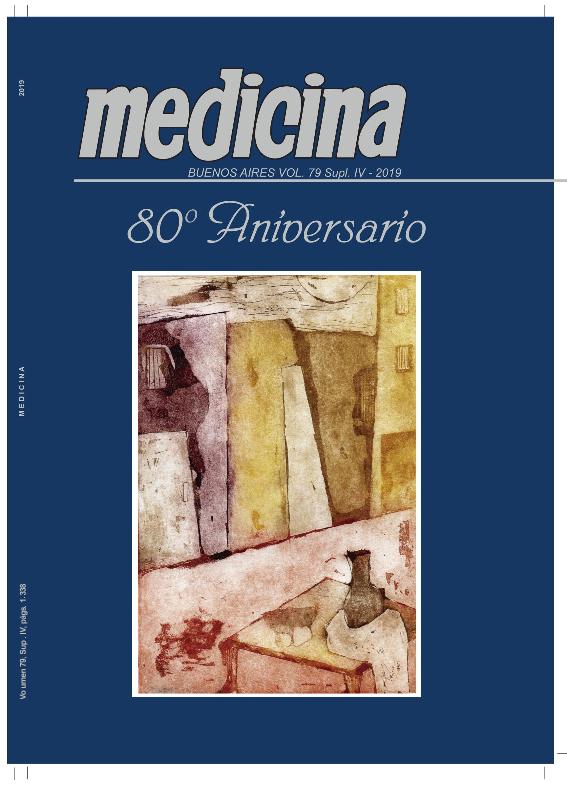Evento
Recruiting sphingolipids to promote migration of retinal pigment epithelium cells
Colaboradores:
Kotsias, Basilio Aristides ; de Vito, Eduardo
; de Vito, Eduardo ; Narvaiz Kantor, Isabel; Semeniuk, Guillermo Basilio
; Narvaiz Kantor, Isabel; Semeniuk, Guillermo Basilio
 ; de Vito, Eduardo
; de Vito, Eduardo ; Narvaiz Kantor, Isabel; Semeniuk, Guillermo Basilio
; Narvaiz Kantor, Isabel; Semeniuk, Guillermo Basilio
Tipo del evento:
Reunión
Nombre del evento:
LXIV Reunión Anual de la Sociedad Argentina de Investigación Clínica; LI Reunión Anual de la Asociación Argentina de Farmacología Experimental; XXI Reunión Anual de la Sociedad Argentina de Biología; XXXI Reunión Anual de la Sociedad Argentina de Protozoología; IX Reunión Anual de la Asociación Argentina de Nanomedicinas y VI Reunión Científica Regional de la Asociación Argentina de Ciencia y Tecnología de Animales de Laboratorio
Fecha del evento:
13/11/2019
Institución Organizadora:
Sociedad Argentina de Investigación Clínica;
Asociación Argentina de Farmacología Experimental;
Sociedad Argentina de Biología;
Sociedad Argentina de Protozoología;
Asociación Argentina de Ciencia y Tecnología de Animales de Laboratorio;
The Histochemical Society;
Título de la revista:
Medicina (Buenos Aires)
Editorial:
Fundacion Revista Medicina
ISSN:
0025-7680
e-ISSN:
1669-9106
Idioma:
Inglés
Clasificación temática:
Resumen
Retinal proliferative diseases, frequent causes of vision loss, involve excessive migration and proliferation of Müller glial cells (MGC) and retinal pigmented epithelium (RPE) cells. Bioactive sphingolipids, as sphingosine-1- phosphate (S1P) and ceramide-1-phosphate (C1P), are established mediators of inflammation and fibrosis and we have shown that S1P stimulates MGC migration (Simon et al; 2015). We now analyzed if they promote RPE migration. We supplemented ARPE19 cells, a human RPE cell line, with 5 μM S1P or 10 μM C1P. We pretreated them with SphkI2 or NVP, inhibitors of sphingosine kinase-1 (SphK1) and ceramide kinase (CerK), respectively to analyze if endogenous S1P or C1P stimulate cell migration, and with W146 and BML241, S1P1 and S1P3 antagonists, respectively to investigate if S1P activated these receptors. Migration was analyzed by the scratch wound assay. Exogenous S1P or C1P significantly promoted RPE cell migration, but their combined addition had no additive effect. Inhibiting S1P synthesis significantly reduced cell migration, and exogenous S1P and C1P partially restored it. In contrast, NVP treatment had no effect on RPE migration. Pretreatment with W146 reduced RPE migration both in control and S1P- supplemented cultures, while BML241 only reduced it in S1P- treated cultures. Our results suggest that endogenous synthesis of S1P activates S1P1 to induce RPE cell migration whereas exogenous S1P stimulates migration by activating both S1P1 and S1P3. Notably, exogenous C1P enhances RPE cell migration but its endogenous synthesis does not. Noteworthy, when added together, S1P and C1P had the same effect on migration as when added separately, implying they may share common signaling pathways. Hence, sphingolipids appear as central regulators of cell migration, and targeting their metabolism might provide tools for treating proliferative retinopathies.
Palabras clave:
ESFINGOSINA 1 FOSFATO
,
RETINA
,
MIGRACION
,
EPITELIO PIGMENTADO
Archivos asociados
Licencia
Identificadores
Colecciones
Eventos(INIBIBB)
Eventos de INST.DE INVEST.BIOQUIMICAS BAHIA BLANCA (I)
Eventos de INST.DE INVEST.BIOQUIMICAS BAHIA BLANCA (I)
Citación
Recruiting sphingolipids to promote migration of retinal pigment epithelium cells; LXIV Reunión Anual de la Sociedad Argentina de Investigación Clínica; LI Reunión Anual de la Asociación Argentina de Farmacología Experimental; XXI Reunión Anual de la Sociedad Argentina de Biología; XXXI Reunión Anual de la Sociedad Argentina de Protozoología; IX Reunión Anual de la Asociación Argentina de Nanomedicinas y VI Reunión Científica Regional de la Asociación Argentina de Ciencia y Tecnología de Animales de Laboratorio; Mar del Plata; Argentina; 2019; 176-177
Compartir



